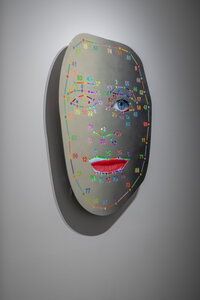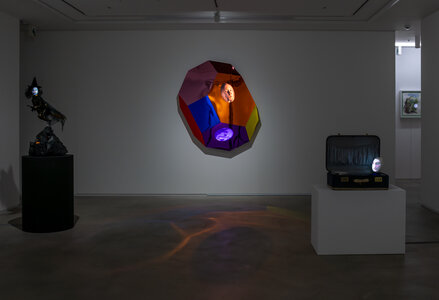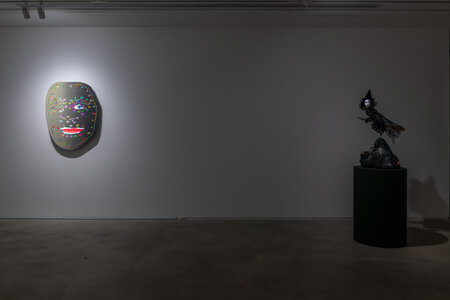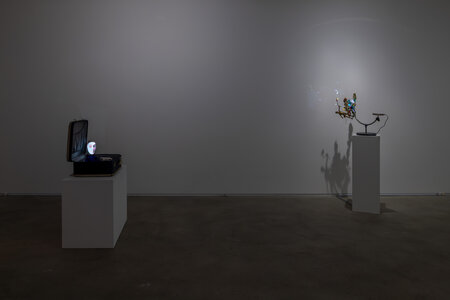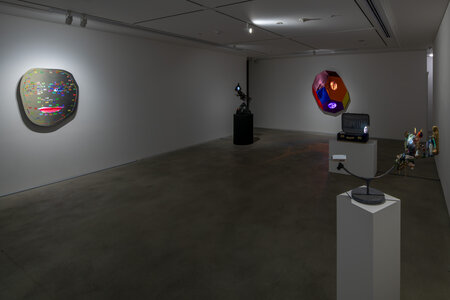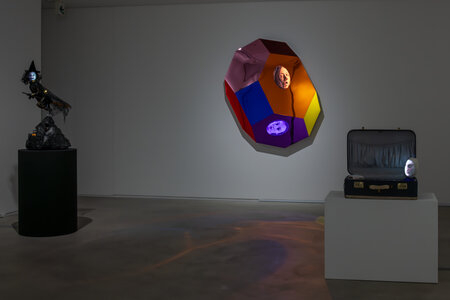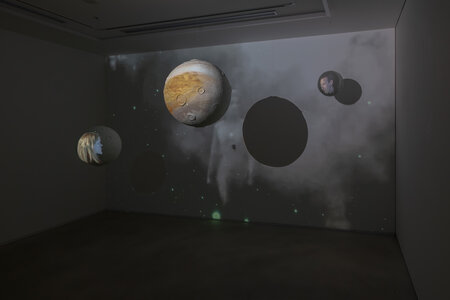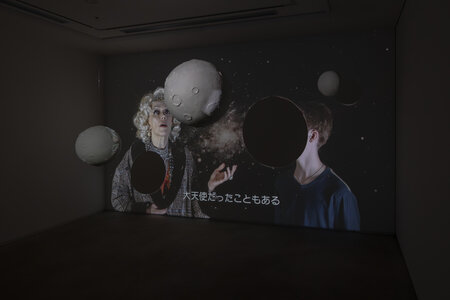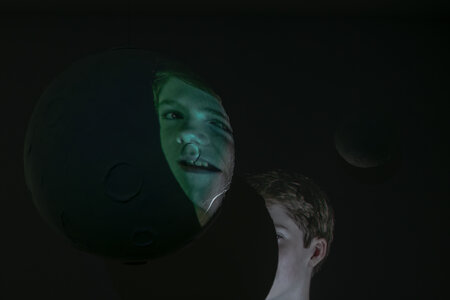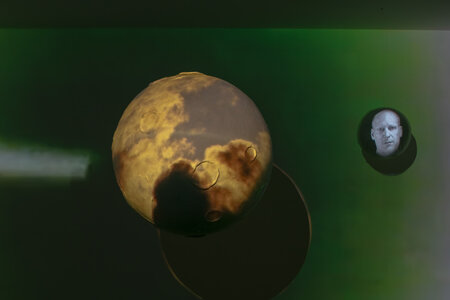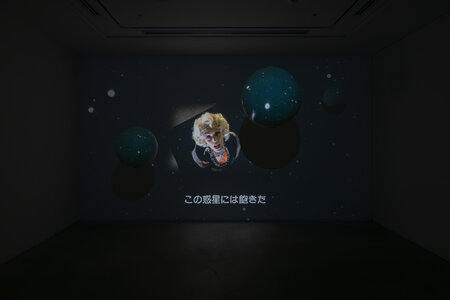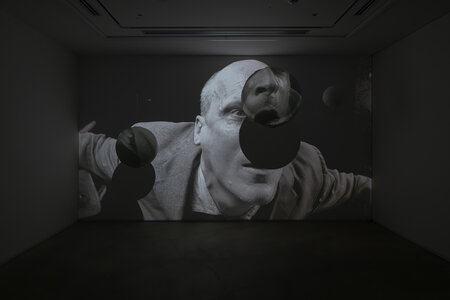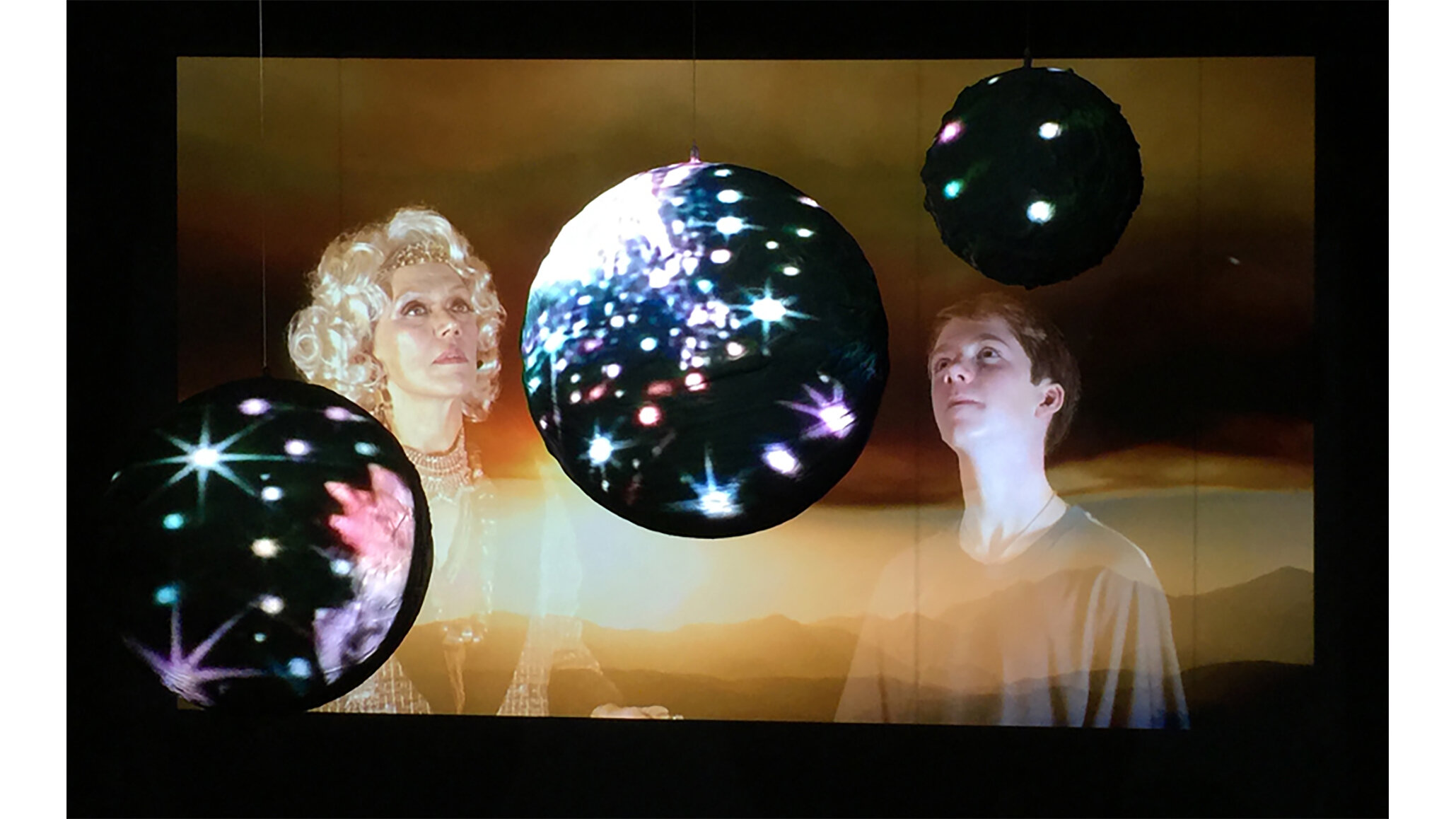
foam, acrylic paint, flourescent paint, resin, Single-channel video, 13 min 41 sec
Tony Oursler
"Transmission"
Fri. 4 October, 2024 17:00 - 19:00
※ no reservation required
Opening hours: 12:00 - 18:00
Closed on Sun., Mon., Tues., Wed. and National Holidays
Tony Oursler (b. 1957, New York) is a multimedia artist who explores the psychological effects of technology and media on human perception, often incorporating themes of digital identity, belief systems, and the uncanny. Oursler is said to have freed the image from television, incorporating projection into his research-based projects in worldwide galleries, museums, and public spaces. Oursler’s work has been widely discussed among academic circles over the past decades by theorists such as Hal Foster, Noam M. Elcott, Pascal Rousseau, and Ann-Katrin Günzel. The exhibition “Transmission” showcases the breadth of his career, from the early signature piece to his latest work, being shown for the first time.
The exhibition begins with Blue Mood (1992), which takes viewers back to Oursler’s early experimentation in the 1990s. Featuring a cloth doll with a video-projected head encased in a suitcase, this haunting piece combines video projection with physical sculpture, creating a surprising and magical experience.
Bigger Than Life (2024) from Oursler’s micro projection series began in 2010 when he began incorporating complex layering of imagery with materials and fragmented narrative, evoking Jungian states, ranging from ecstasy to anxiety in the digital age. The work captures eerie new identity formations within the voyeuristic experience of social media, reflecting the invasive vision of the smartphone camera, a recurring theme in Oursler’s practice.
My Saturnian Lover(s) (2016-2017) is an immersive video installation set in Modernism’s waning years, the late 1940s. Reflecting Oursler's ongoing interests in the pop-cultural archive, this work is based on a loose group of real UFO enthusiasts: George
Adamski, Ruth Norman, Howard Menger, and Marla Baxter, who produced the first "evidence" via UFO photography. These grainy images of glowing white discs reflect a collision between technology and myth. The boundaries between reality and subcultural fantasy blur, echoing Oursler’s broader interest in the impact of mass media on perception.
The exhibition also features Oursler’s Facial Recognition series, which utilizes algorithmic patterns from this software to explore the influence of digital media on identity perception. Oursler claims the new human portrait is created by the machine's view of us, consisting not of images alone but of "aggregated numbers and scraped data, which is used to cross-reference and predict our every move." He proposes that this data could also be used for creative purposes if made available to the public.
Wicca (2024) presents a new series of stock characters, specifically a new-age practitioner, brought to life through a digital lens that animates the face. This small figure floats above an imaginary landscape that suggests a volcanic ruin, hinting at a renewed interest in pseudoscientific systems and the occult as a means of rejecting technology. This theme is further explored with Eu/An (2024), a colorful wall screen in the form of a crystalline structure. Combining digital screens and polychromed mirrors, this piece implies a convergence of technology and nature, where New Age crystal power and high-tech nanotechnology meet, identifying our current moment as one of re-enchantment.
Oursler often engages with themes that are inherently unsettling, challenging our belief systems. Through his assemblage ofelements from creativity, technology, sci-fi, and pop culture, he creates immersive environments that are both psychologically disturbing and poetically evocative, oscillating between the absurd and the profound. His works, both electric and spiritual,sometimes employ humor while harnessing material forms to critique media and show us how it can shape and distort reality. Oursler’s works offer viewers a chance to reflect on these issues and suggest new creative paths forward for technology.
